#national museum of scotland
Text

Some years ago a lady brought to the Royal Scottish Museum in Edinburgh a trout covered with a fine coat of white fur. It was pleasingly mounted on a wooden shield and was labelled as follows:
FUR BEARING TROUT
Very Rare
Caught while trolling in Lake Superior off Gros Cap, Near Sault Ste. Marie, district of Algoma. It is believed that the great depth and the extreme penetrating coldness of the water in which these fish live has caused them to grow their dense coat of (usually) white fur. Mounted by ROSS C. JOBE, Taxidermist of Sault Ste. Marie, Ont.
Visiting the museum to find out more about her unique fish, the lady was told that it was undoubtedly a trout (either brown or brook) and that its fine white coat was undoubtedly from a rabbit, whereupon she immediately presented the fish to the museum. She had bought this fake in good faith which indicates that the idea of a fur-bearing trout did not seem outlandish to her.
―Stanley Peter Dance, Animal Fakes & Frauds, 1976
#fur bearing trout#fur-bearing trout#fearsome critters#animal fakes & frauds#s peter dance#taxidermy#hoax#royal scottish museum#national museum of scotland#ross c jobe#photographer unknown#popular post
2K notes
·
View notes
Text
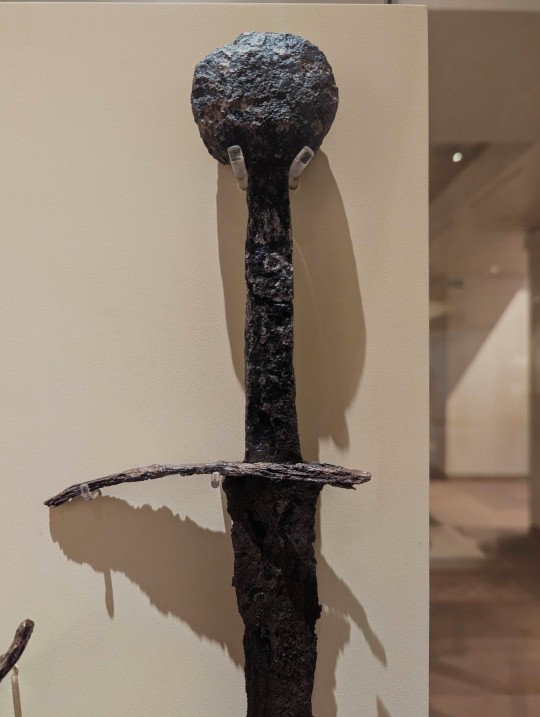

Sword Hilt and Portion of Blade Excavated from the Isle of Man dated between the 13th-14th Centuries on display at the National Museum of Scotland in Edinburgh Scotland
Photographs taken by myself 2023
#sword#medieval#military history#archaeology#art#scotland#scottish#national museum of scotland#edinburgh#barbucomedie
199 notes
·
View notes
Text

Black & white glass plate negative of Lachlan MacAskill with a peat spade and his pet dog and kitten, above Laig Bay, Isle of Eigg with An Sgurr in the distance.
Photographed between 1910 and 1930, part of the MEM Donaldson Collection at the National Museum of Scotland.
- Source: Stories of Scotland Podcast
#Lachlan MacAskill#peat#Laig Bay#Isle of Eigg#An Sgurr#Scotland#storycatching#vintage photography#1910-1930#MEM Donaldson Collection#National Museum of Scotland#Stories of Scotland Podcast
193 notes
·
View notes
Photo
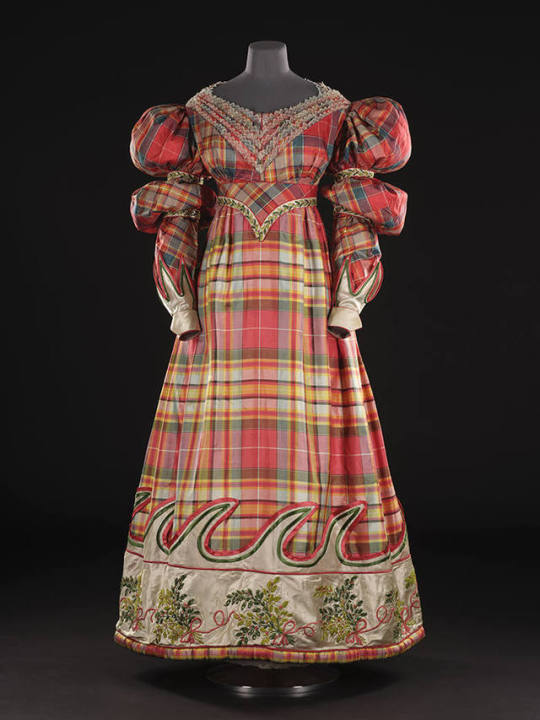
Dress
c.1832
National Museum of Scotland
#dress#fashion history#historical fashion#1830s#romantic era#romantic fashion#1832#19th century#red#tartan#plaid#scotland#national museum of scotland#popular
2K notes
·
View notes
Text
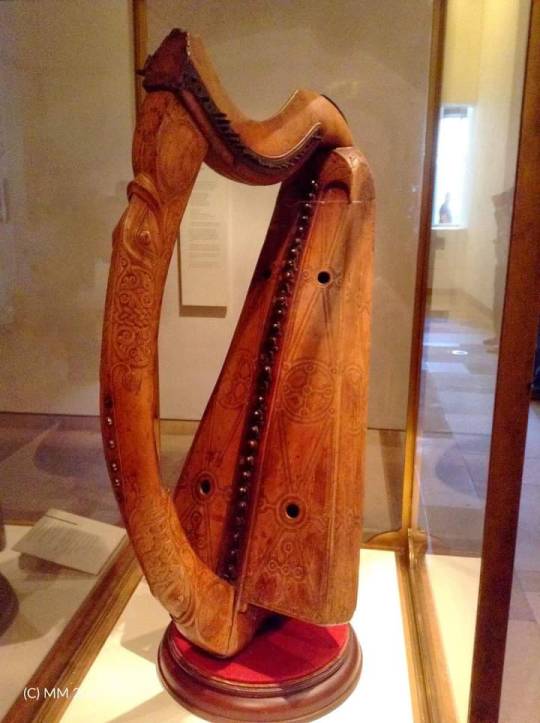
Queen Mary Harp - (National Museum, Edinburgh). The Queen Mary harp, (clarsach) dating from the 15th century or possibly before, is among the oldest surviving Celtic Harps in Scotland. The woodwork is richly decorated with scroll-work, geometric designs, and carvings of animals. According to a story associated with the harp, Mary Queen of Scots gave the instrument to a female ancestor (by marriage) of the Robertson family of Lude, in Perthshire. Another theory is that the harp previously belonged to an Ulster harp player who died in Scotland. The Celtic harp (clarsach), is believed to be the true and most ancient instrumental accompaniment of Gaelic song.
100 notes
·
View notes
Text
youtube
Welcome to the news wrap-up, where I cover a wide variety of current affairs in the history, archaeology, and museum-related realms.
In this video, I discuss the Pokémon x Van Gogh exhibition, some great repatriation news, Mischief at the Mütter Museum, and more!!
#history#museum#youtube#mütter museum#national museum of scotland#vincent van gogh#pokemon#archaeology#the sycamore gap#hadrians wall
45 notes
·
View notes
Text

Gold Finger Ring, nr. Selkirk, 9th Century CE, The National Museum of Scotland, Edinburgh
#ring#rings#ancient culture#ancient craft#ancient living#design#symbols#archaeology#jewellery#national museum of scotland#Scotland#relic#artefact#metalwork#metalworking
120 notes
·
View notes
Text
Explore the diversity of the natural world, world cultures, art and design, science and technology and Scottish history, all in one amazing building at the National Museum of Scotland, Edinburgh 🏴🎭
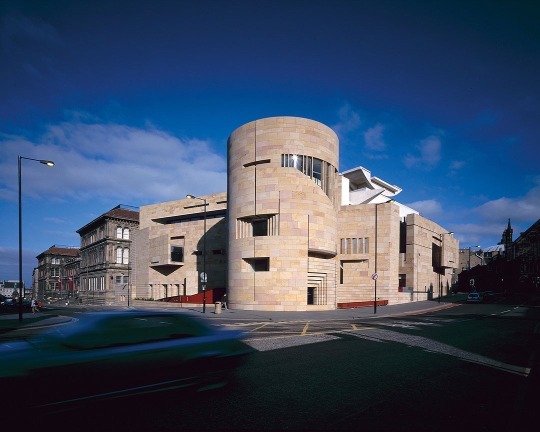


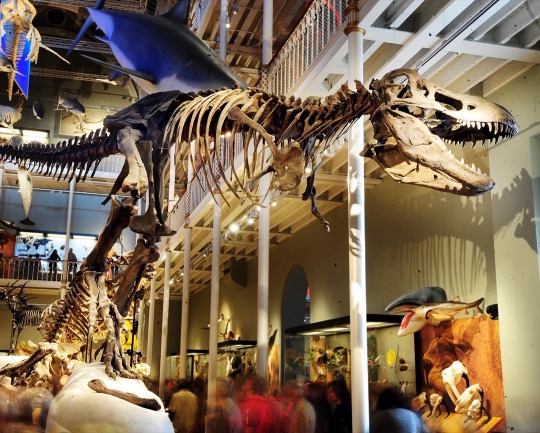






#scotland#scottish#travel#uk#travelinspiration#museum#national museum of scotland#Edinburgh#history#natural history
34 notes
·
View notes
Text
Today's Hidden Gem
Taking a wander through the National Museum today, I nearly walked past this cute lil' carving of an Ox!
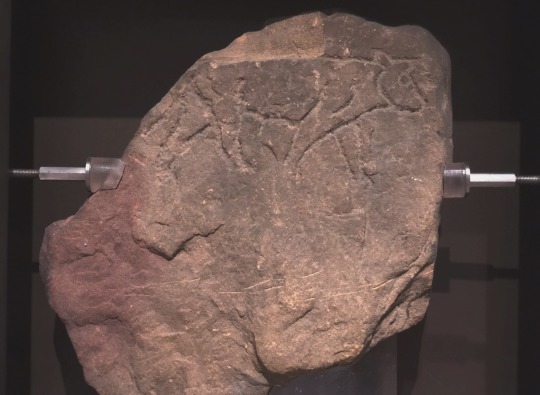
This wee beauty hails from East Lomond Hill, and dates to c.AD 500-800. Carved into (I believe) a rough block of sandstone is the ox, with clearly defined leg muscles, ears and tail!


Oxen were domesticated and utilised by farmers to move heavy loads and plough fields.
#national museum of scotland#national museums scotland#scottish youtuber#ancient history#archaeology#archaeogaming#youtube#chaotic academia#scottish archaeology#scottish history#archaeolorhi#ancient farming#oxen#animal carving#celtic art#roman art#roman britain#roman scotland#celtic britain#celtic scotland#celts#celtic#dark academia#celtic carving#scottish prehistory#scottish art#ox carving#ox painting
94 notes
·
View notes
Text
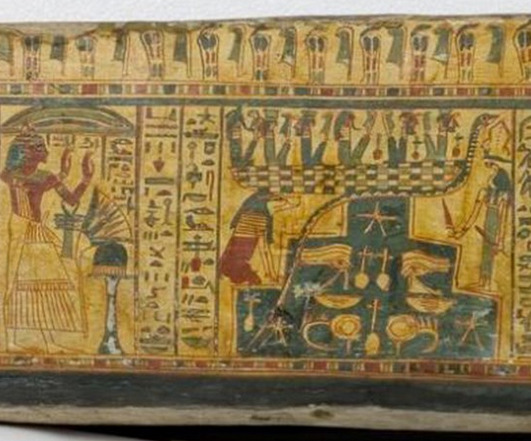
Hepet-Hor (far right) on the coffin of Iufenamun. She stands protectively before the double staircase which represents the primeval mount; Osiris sits atop it with a retinue of gods. Ammut sits on the left side of the staircase. At the National Museum of Scotland.
(I can't believe how many images of Hepet-Hor I've found. I've got a spreadsheet with over forty coffins and papyri. Some people just collect stamps...)
#Ancient Egypt#21st Dynasty#Third Intermediate Period#Hepet Hor#Ammut#coffin#yellow coffin#National Museum of Scotland#Iufenamun
15 notes
·
View notes
Text

my love in the national museum of scotland.
17 notes
·
View notes
Text

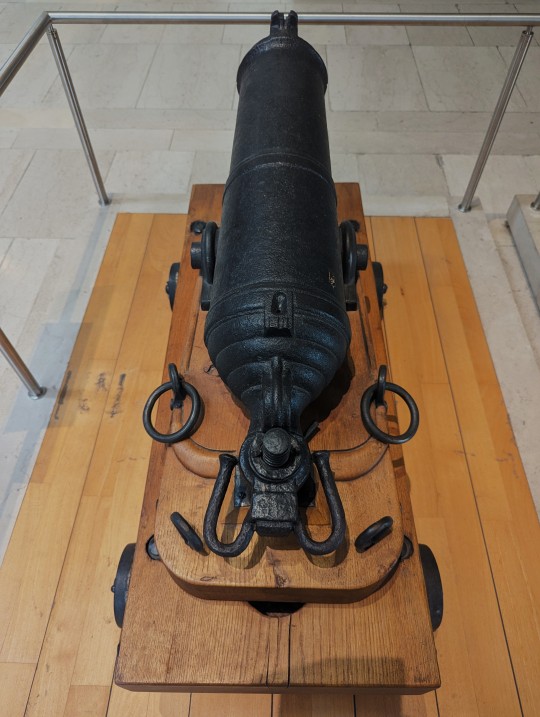
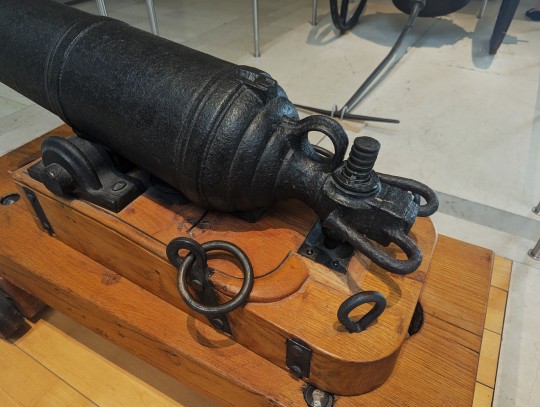
Carronade Six-Pounder Cannon from Falkirk, Scotland dated to 1781 on display at the National Museum of Scotland in Edinburgh, Scotland
This is one of the most famous products of Scotland's first large scale industrial company, the Carron Company. These powerful but light guns, named after the company, were first made in 1778 and soon became the favourite of Admiral Nelson's navy.
The Carron Company was established in 1759, near Falkirk in Strilingshire, by a group of entrepeneurs including the Englishmen Samuel Garbett, chemist John Roebuck and the Scot William Cadell. It was by far the largest enterprise of its kind in Scotland and used local ore, smelted by coke.
Photographs taken by myself 2023
#naval history#18th century#british empire#scotland#scottish#georgian#hanoverian#national museum of scotland#edinburgh#barbucomedie
129 notes
·
View notes
Text

Memorial Pole To Be Returned To The Nisga’a Nation After 93 years.
The pole "was acquired in 1929 by Canadian curator and ethnographer, Marius Barbeau, on behalf of the Royal Museum of Scotland, which later became the National Museum of Scotland (NMS), and went on display the following year.
"However, NMS said that while the museum acted in good faith in its acquisition of the pole, it now understands that the individual(s) who 'sold' it to Mr Barbeau did so without the cultural, spiritual, or political authority to do so on behalf of the Nisga’a Nation."
"Carved from red cedar in the 1860s, the pole [37 feet] includes family crests and animal and human figures. It commemorates the Nisga’a warrior Ts’aawit and stood outside his relatives’ home for 70 years before being removed while villagers were away for the annual hunting season."
"The museum agreed last year to return the pole, which has been on display since 1930."
[Source 1] [Source 2] [Source 3]
19 notes
·
View notes
Text

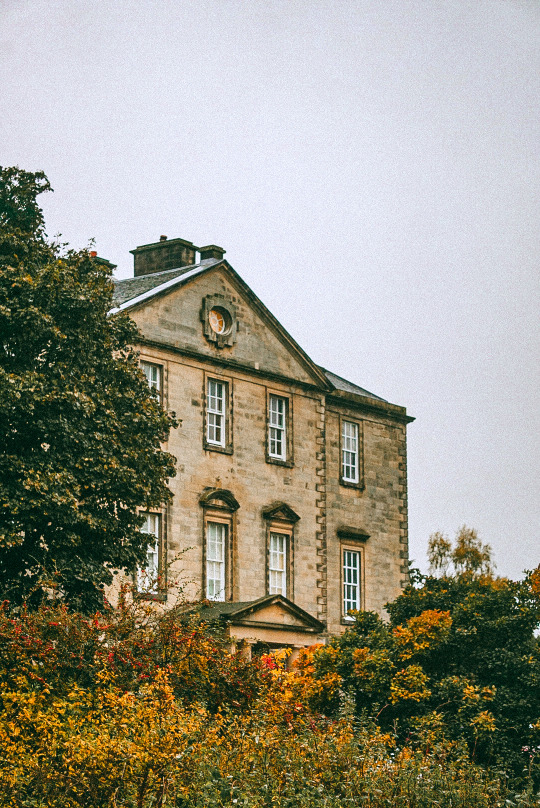

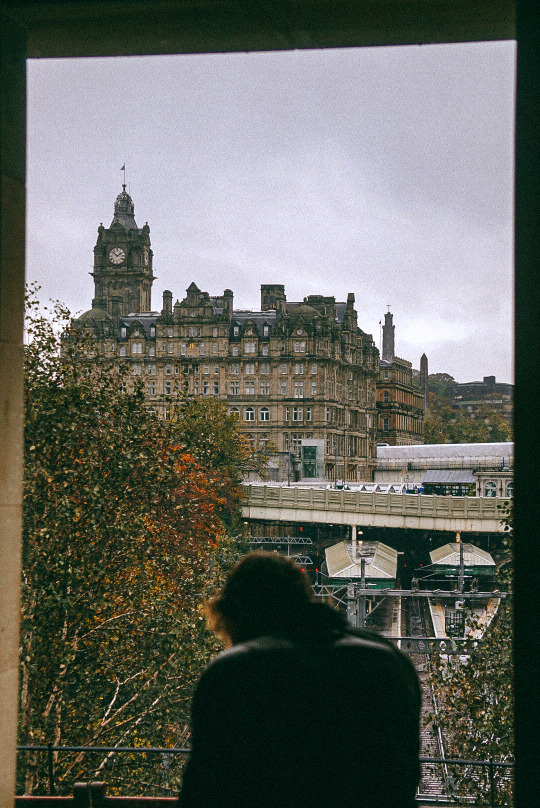
october 29, 2023 — following through arbitrary dreams🍂
#mine#photography#national museum of scotland#edinburgh#me#redhead#dark academia#studyblr#study abroad#scotland#autumn#halloween#lily potter
10 notes
·
View notes
Text
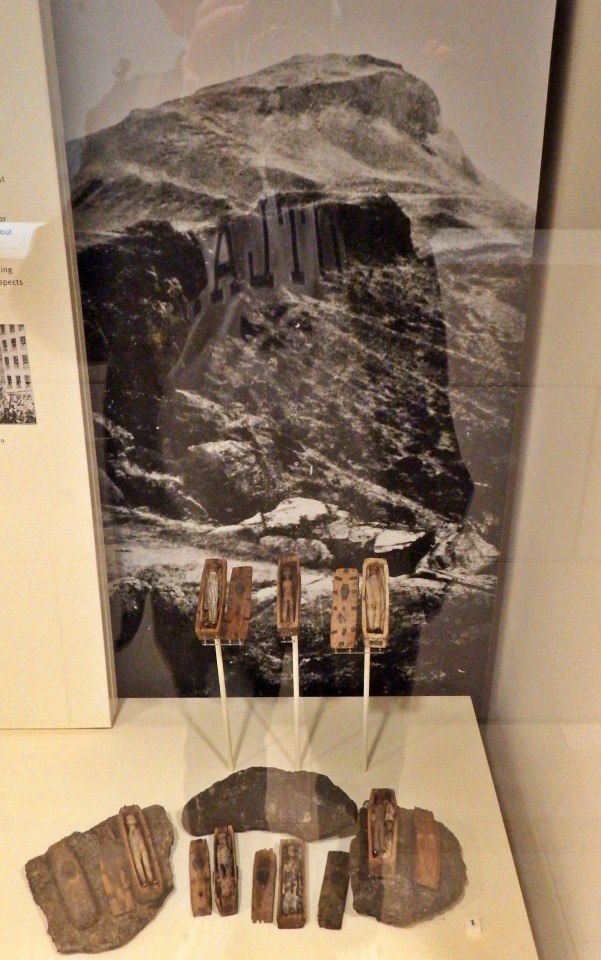

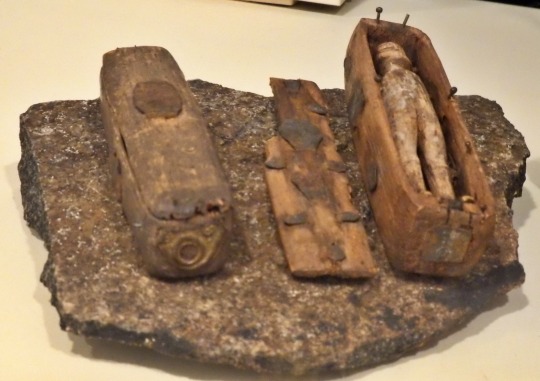


The mysterious coffins of Arthur’s Seat.
I popped into the National Museum of Scotland and captured a few shots of these wee beauties. Nobody knows. the full story about them, who made them and why, but a fair bit work went into, they may lack real craftsmanship, and look a bit "naive", but I think they are pretty cool. They have always fascinated me after I read about them in the Ian Rankin, Inspector Rebus book, The Falls in 2001
In 1836, five boys were hunting rabbits on the north-eastern slopes of Arthur’s Seat, the main peak in the group of hills in Holyrood Park, in a small cave in the crags of the hill they stumbled across seventeen miniature coffins carved in pine and decorated with tinned iron. Carefully arranged in a three-tiered stack, each coffin contained a small wooden figure with painted black boots and individually crafted clothing.
At the time of their discovery, some speculated that they were implements of witchcraft; others suggested they were charms used by sailors to ward off death or even mimic burials for those lost at sea. There is also a provocative theory that the little figures are tributes to the seventeen victims of famed Edinburgh serial killers Burke and Hare, as the figures were found just seven years after Burke’s execution. However, all of the figures are dressed in male attire, whereas twelve of Burke and Hare’s victims were female.
Interestingly, some of the figures have arms while others have had theirs removed to fit in their coffins, perhaps suggesting they were not originally made to be buried. Allen Simpson and Samuel Menefee (of the University of Edinburgh and the University of Virginia, respectively) carried out a detailed study of the figures in 1994, and have suggested they were adapted from a set of wooden toy soldiers manufactured around the 1790s, but not re-clothed or buried in the cave until the 1830s. But this is really the extent of knowledge about them. There's a great very well researched article on The Fortean in the Archives site here
https://aforteantinthearchives.wordpress.com/2010/01/10/the-miniature-coffins-found-on-arthurs-seat/
It's quite a coincidence that I visited today, as it is only three days away from the first published account of the discover, which appeared in the Scotsman on July 16th 1836, said to be three weeks after the boys found them.
If you want to read a very well researched article about the coffins check out the Historian Mike dash's web page below.
https://mikedashhistory.com/2010/08/31/the-miniature-coffins-found-on-arthurs-seat/
#Edinburgh#Arthur’s Seat#holyrood park#Scotland#scottish#mystery#National Museum of Scotland#my pics
36 notes
·
View notes
Text
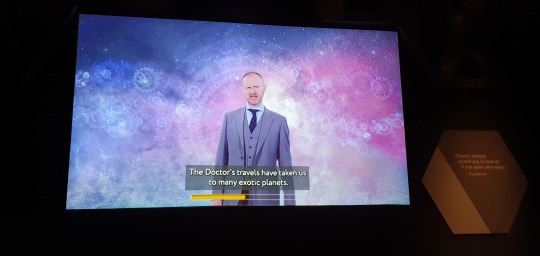
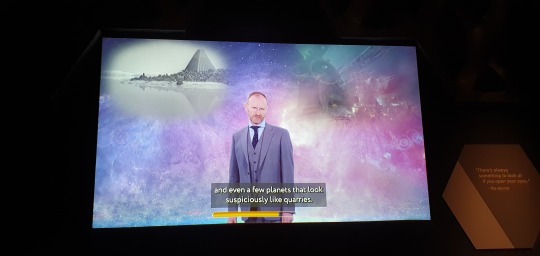
Went to the Doctor Who:Worlds of Wonder exhibition at the National Museum of Scotland in Edinburgh yesterday. Was delighted to find it was introduced and concluded by short videos from a familiar face who also featured in a group "recollections" video. I know several of my followers would like to see how smartly he was turned out (sorry for the people who crossed in front - not much I could do about that!)
27 notes
·
View notes